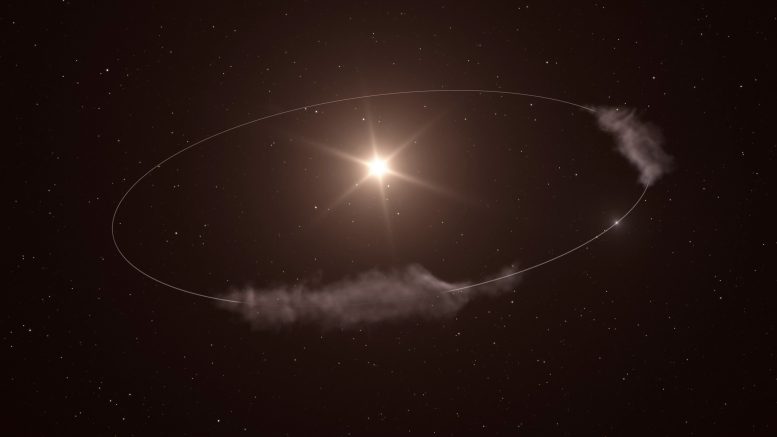
Using the ALMA, astronomers have discovered a debris cloud in the PDS 70 system, potentially indicating two planets sharing the same orbit. This marks the most substantial evidence of this phenomenon to date, leading to new inquiries about the existence and nature of Trojans in various planetary systems. Credit: ESO/L. Calçada
Astronomers have detected a debris cloud that could indicate a ‘sibling’ planet sharing the orbit of an existing planet around a distant star, using the Atacama Large Millimeter/submillimeter Array (ALMA).
Discovery of Potential Co-orbital Planets
Using the Atacama Large Millimeter/submillimeter Array (ALMA), astronomers have discovered a potential ‘sibling’ of a planet in distant space. They’ve detected a debris cloud possibly sharing this planet’s orbit, suggesting it could be a new planet in the formation stages or remnants of a previously formed one. If substantiated, this finding would provide the strongest evidence yet of two exoplanets sharing the same orbit.
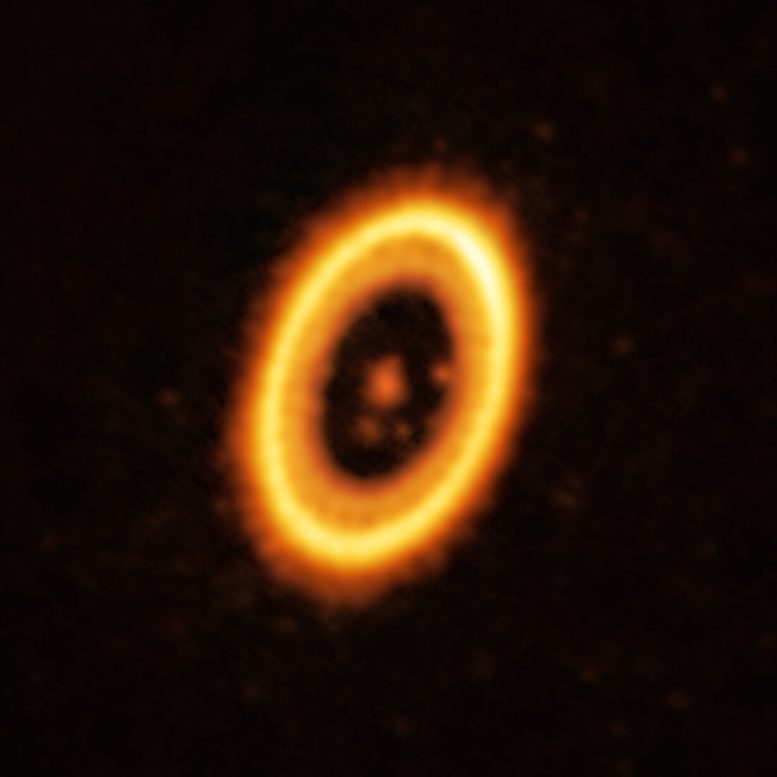
This image, taken with the Atacama Large Millimeter/submillimeter Array (ALMA) shows the young planetary system PDS 70, located nearly 400 light-years away from Earth. The system features a star at its center, around which the planet PDS 70b is orbiting. On the same orbit as PDS 70b, astronomers have detected a cloud of debris that could be the building blocks of a new planet or the remnants of one already formed. The ring-like structure that dominates the image is a circumstellar disc of material, out of which planets are forming. There is in fact another planet in this system: PDS 70c, seen at 3 o’clock right next to the inner rim of the disc. Credit: ALMA (ESO/NAOJ/NRAO) /Balsalobre-Ruza et al.
“Two decades ago it was predicted in theory that pairs of planets of similar mass may share the same orbit around their star, the so-called Trojan or co-orbital planets. For the first time, we have found evidence in favor of that idea,” says Olga Balsalobre-Ruza, a student at the Centre for Astrobiology in Madrid, Spain who led the paper published today (July 19) in the journal Astronomy & Astrophysics.
Using the Atacama Large Millimeter/submillimeter Array (ALMA), astronomers have found the possible ‘sibling’ of a planet orbiting a distant star. This video summarizes the discovery. Credit: ESO
Co-orbital Planets and Trojans
Trojans are rocky bodies sharing an orbit with a planet, a common occurrence in our own Solar System.[1] The most notable example is Jupiter’s Trojan asteroids—more than 12,000 rocky bodies that share Jupiter’s orbit around the Sun. Astronomers have suggested that Trojan planets could exist around stars other than our Sun, although evidence has been lacking.
“Exotrojans [Trojan planets outside the Solar System] have so far been like unicorns: they are allowed to exist by theory but no one has ever detected them,” says co-author Jorge Lillo-Box, a senior researcher at the Centre for Astrobiology.
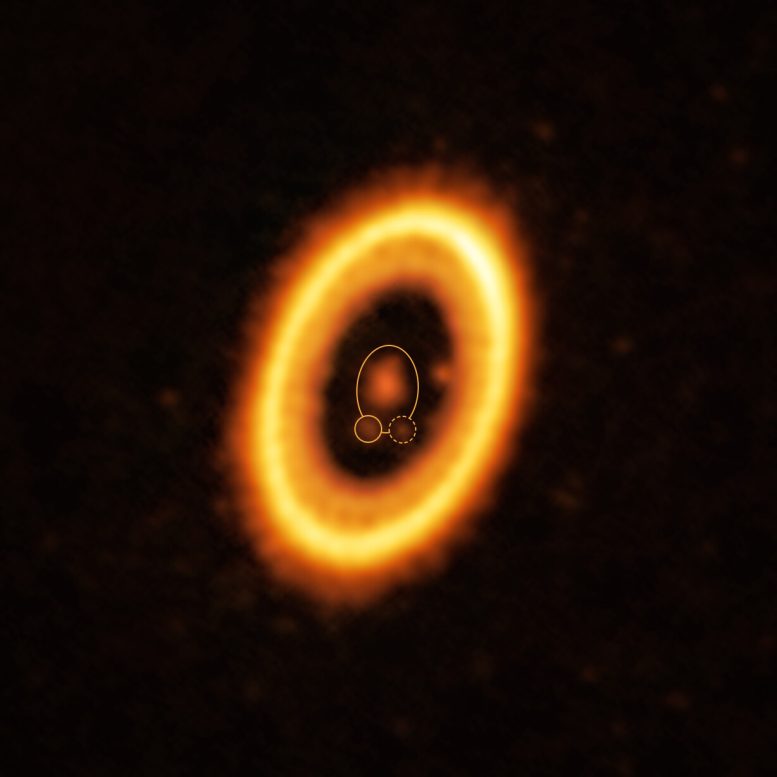
An annotated version of the image above of the young planetary system PDS 70. The system features a star at its center, around which the planet PDS 70b (highlighted with a solid yellow circle) is orbiting. On the same orbit as PDS 70b, indicated by a solid yellow ellipse, astronomers have detected a cloud of debris (circled by a yellow dotted line) that could be the building blocks of a new planet or the remnants of one already formed. The ring-like structure that dominates the image is a circumstellar disc of material, out of which planets are forming. There is in fact another planet in this system: PDS 70c, seen at 3 o’clock right next to the inner rim of the disc. Credit: ALMA (ESO/NAOJ/NRAO) /Balsalobre-Ruza et al.
The PDS 70 System and the Role of ALMA
Now, an international team of scientists used ALMA, a project in which the European Southern Observatory (ESO) is a partner, to find the most compelling observational evidence yet for the existence of Trojan planets. This discovery took place in the PDS 70 system, a young star hosting two Jupiter-like planets, PDS 70b and PDS 70c. The team analyzed archival ALMA observations of this system and identified a debris cloud in the PDS 70b’s orbit where Trojans are anticipated to exist.
This sequence takes the viewer toward the southern constellation of Centaurus. We zoom in on the orange dwarf star PDS 70, which is located about 400 light-years away and has at least two planets orbiting it. The final shot shows the spectacular new image, taken with the Atacama Large Millimeter/submillimeter Array (ALMA) of the PDS 70 system, where the planet PDS 70b and its Trojan cloud of debris are in the same orbit around the central star. Credit: ESO/L. Calçada/ALMA (ESO/NAOJ/NRAO) /Balsalobre-Ruza et al. Music: Astral electronic
Analyzing Lagrangian Zones
Trojans occupy what’s known as Lagrangian zones, two broad areas in a planet’s orbit where the combined gravitational pull of the star and the planet can trap material. Upon studying these zones in PDS 70b’s orbit, astronomers detected a faint signal from one of them, suggesting a debris cloud with a mass approximately twice that of our Moon may reside there.
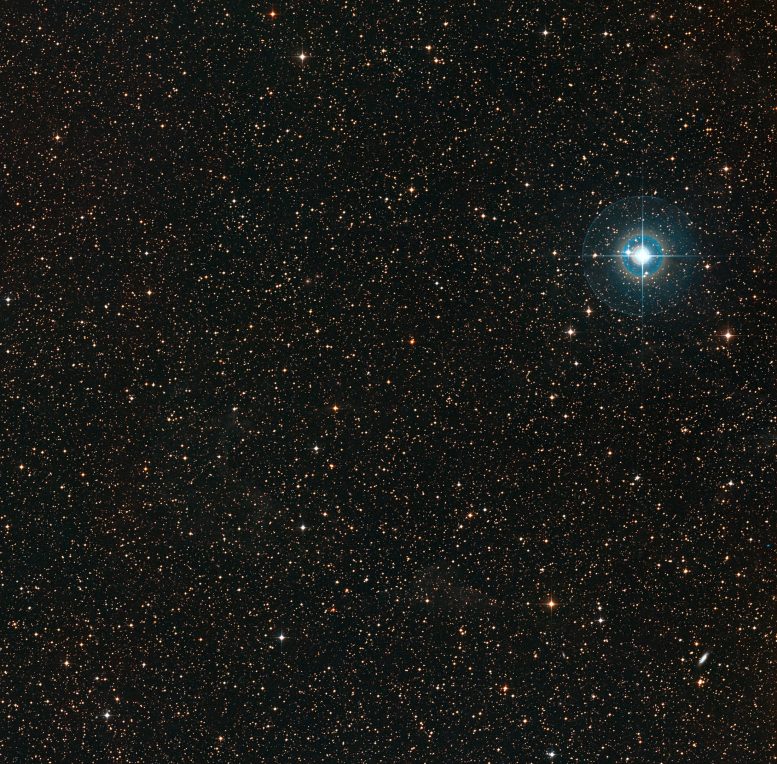
This colorful image shows the sky around the faint orange dwarf star PDS 70 (in the middle of the image). The bright blue star to the right is χ Centauri. Credit: ESO/Digitized Sky Survey 2. Acknowledgment: Davide De Martin
Future Implications of the Discovery
The team proposes that this debris cloud could indicate an existing Trojan world in this system, or a planet undergoing formation. “Who could imagine two worlds that share the duration of the year and the habitability conditions? Our work is the first evidence that this kind of world could exist,” says Balsalobre-Ruza. “We can imagine that a planet can share its orbit with thousands of asteroids as in the case of Jupiter, but it is mind-blowing to me that planets could share the same orbit.”
“Our research is a first step to look for co-orbital planets very early in their formation,” says co-author Nuria Huélamo, a senior researcher at the Centre for Astrobiology. “It opens up new questions on the formation of Trojans, how they evolve, and how frequent they are in different planetary systems,” adds Itziar De Gregorio-Monsalvo, ESO Head of the Office for Science in Chile, who also contributed to this research.
This animation shows a planet and two clouds of debris at the so-called Lagrangian zones in the planet’s orbit, all moving around a central star. Lagrangian zones are two extended regions in a planet’s orbit where the combined gravitational pull of the star and the planet can trap material. These regions can be occupied by Trojans, which are rocky bodies in the same orbit of a planet. In theory, these Trojans could be in both these regions, but in the PDS 70 system astronomers have so far detected only one cloud in the orbit of the exoplanet PDS 70b. The detected cloud could point to an existing Trojan planet in the same orbit as PDS 70b, or a world in the process of forming. Credit: ESO/L. Calçada
Confirmation and Future Studies
To fully confirm their findings, the team will have to wait until after 2026. At that time, they will aim to use ALMA to observe if both PDS 70b and its potential sibling, the debris cloud, move noticeably along their shared orbit around the star. “This would be a breakthrough in the exoplanetary field,” says Balsalobre-Ruza.
“The future of this topic is very exciting and we look forward to the extended ALMA capabilities, planned for 2030, which will dramatically improve the array’s ability to characterize Trojans in many other stars,” concludes De Gregorio-Monsalvo.
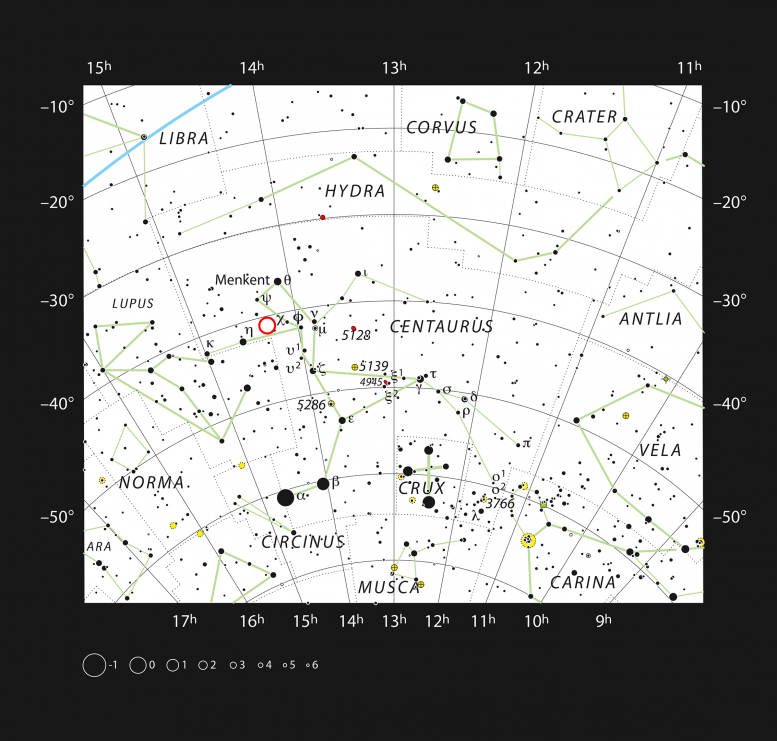
This chart shows the southern constellation of Centaurus and marks most of the stars visible to the unaided eye on a clear dark night. The dwarf star PDS 70 is marked with a red circle. Credit: ESO, IAU and Sky & Telescope
Notes
- When asteroids in Jupiter’s orbit were first discovered, they were named after heroes of the Trojan War, giving rise to the name Trojans to refer to these objects.
This research was presented in a paper to appear in Astronomy & Astrophysics.
Reference: “Tentative co-orbital submillimeter emission within the Lagrangian region L5 of the protoplanet PDS 70 b” by O. Balsalobre-Ruza, I. de Gregorio-Monsalvo, J. Lillo-Box, N. Huélamo, Á. Ribas, M. Benisty, J. Bae, S. Facchini and R. Teague, 19 July 2023, Astronomy & Astrophysics.
DOI: 10.1051/0004-6361/202346493
The team is composed of O. Balsalobre-Ruza (Centro de Astrobiología [CAB], CSIC-INTA, Spain), I. De Gregorio-Monsalvo (European Southern Observatory [ESO], Chile), J. Lillo-Box (CAB), N. Huélamo (CAB), Á. Ribas (Institute of Astronomy, University of Cambridge, UK), M. Benisty (Laboratoire Lagrange, Université Côte d’Azur, CNRS, Observatoire de la Côte d’Azur, France and Univ. Grenoble Alpes, CNRS, IPAG, France), J. Bae (Department of Astronomy, University of Florida, USA), S. Facchini (Dipartimento di Fisica, Università degli Studi di Milano, Italy), and R. Teague (Department of Earth, Atmospheric, and Planetary Sciences, Massachusetts Institute of Technology, USA).

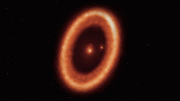
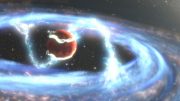
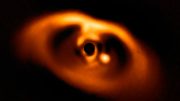
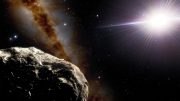
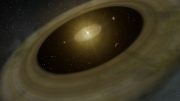
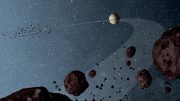
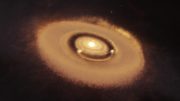
Be the first to comment on "Exotrojan Unicorns: Astronomers Uncover Possible Sibling Planets"